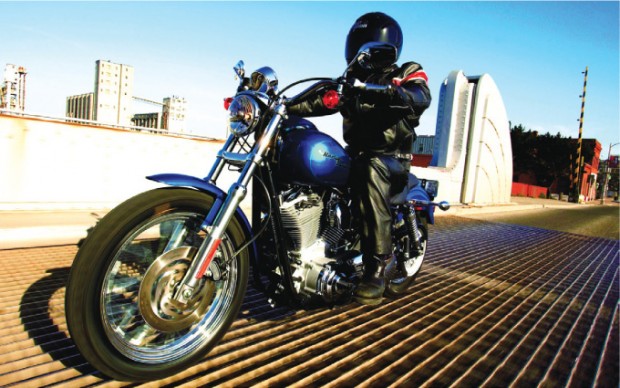How to Ride A Motorcycle Safely on Poor Road Surfaces – Motorcycle Safety Foundation

POOR ROAD SURFACES
A public highway is an unpredictable place. Even familiar stretches can seem like a foreign land at times. Conditions can change from day to day, depending upon weather, road use, or other unpredictable factors. When it comes to surfaces on new or unfamiliar roads you must be prepared and ready for anything. You never know what surprises lurk around yonder bend. Sound knowledge combined with a good riding strategy is essential for handling some common poor roadway surface conditions that you should be prepared to encounter.

Loose Surfaces/Debris: Reduce speed to create a margin of safety and stay upright, minimizing lean. Also watch for glass, metal, or other sharp debris in these areas that could cause a puncture.
Spills: Make it a regular part of your SEE process to search the road for spills, and if you do notice anything irregular, make any speed or direction adjustments before you reach the spill.
Rain Grooves: Rain grooves that cut into the surface of the pavement do not reduce traction, but they will give a slightly loose feel to your motorcycle as you cross them. Scan for them and adjust accordingly so that they don’t take you by surprise and cause you to overreact.
Bridge Gratings: The coefficient of friction between rubber and steel (like that which bridge gratings are made from) is significantly lower than that of rubber on asphalt, especially when wet. Slow as you approach these, and make any speed or direction changes before you reach the grating. Once you are riding across the bridge grating, keep your speed steady and don’t make sudden changes in speed or direction.
Bumps, Cracks, and Tracks: If you encounter a bump where tree roots break up the pavement, prepare just as you would for surmounting an obstacle and cross at as close to a 90-degree angle as possible. If necessary, rise off the seat as you go over them. For railroad crossings, it is usually safe to ride straight within your lane to cross the tracks. For track and road seams that run parallel to your path, move far enough away from the tracks to cross at an angle of at least 45 degrees, then make a quick, sharp turn.
Crowned Roads/Worn: Rain (or debris) can accumulate in the low spots. A crowned road can reduce the amount of available lean angle in some corners or otherwise affect cornering. Adjust your path of travel accordingly.
Icy or Slick Surfaces: Ice and snow, moss, wet leaves, mud, crack sealant, tar snakes (tar-filled surface cracks), and some road paints can be slippery, especially at extreme (hot or cold) temperatures. Avoid them whenever possible.
Rain: The first few minutes after rain begins to fall is the most hazardous time for motorcycle riders. Any oil or other foreign matter on the roadway surface combines with the first raindrops to create a slick sheet. It may be wise to avoid riding during the first few minutes of a rainstorm, or at least greatly reduce your speed until the rain has had an opportunity to rinse the slick coating from the surface.
When riding on wet surfaces, ride along in the tire tracks left by vehicles in front of you. Water levels will likely be lowest in the area where a car tire has just passed, lowering the likelihood of your motorcycle hydroplaning. Surface oils will be most prevalent at intersections.
For more information go to www.msf-usa.org.


